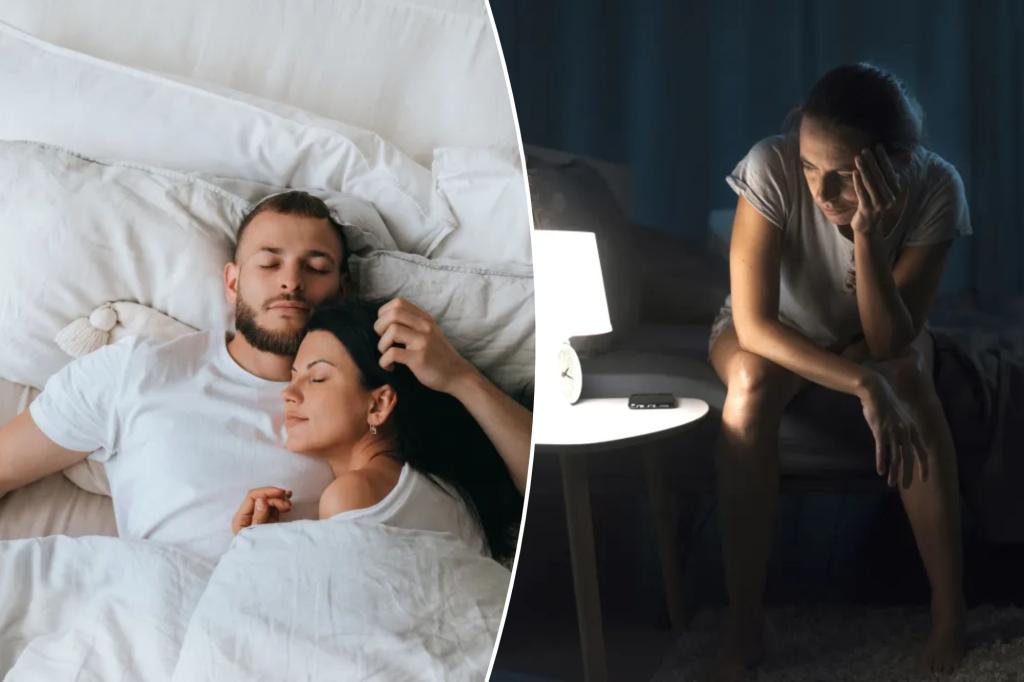Move over, melatonin.
New research suggests that couples who engage in one surprisingly simple nighttime ritual sleep more soundly, stress less and feel emotionally closer to their partner.
And no, it’s not sex.
In the study, researchers at Auburn University cozied up to the bedtime routines of 143 heterosexual couples who’d been together for an average of 13 years.
The lovebirds were surveyed on their sleeping habits and physical closeness once the lights went out.
Couples who drift off while spooning, intertwined or snuggling face-to-face reported significantly lower stress levels and a stronger emotional bond than those keeping their distance.
The best part? All that pre-snooze snuggling didn’t lead to any sleep disturbances later in the night.
“Our study lends support to the idea that cuddling at sleep onset may be beneficial for physiological and relational functioning, but future research in this area is critically needed,” the authors concluded.
Several questions remain, including whether physical closeness improves relationship quality or if more secure couples naturally sleep closer together.
Snuggle science
Turns out, cuddling doesn’t just spark romance, it packs some serious health perks too.
Cuddling triggers the flow of oxytocin — aka the “love hormone” — known to boost feelings of comfort, safety and emotional connection.
It can also lower your blood pressure, slow your heart rate and send cortisol, the body’s main stress hormone, packing. That combination helps your body unwind and sets the stage for a deeper, more peaceful sleep.
A 2022 study found that couples who share a bed tend to nod off faster and sleep more soundly throughout the night. They also reported less intense insomnia and a lower risk of sleep apnea than their solo-sleeping counterparts.
It gets dreamier: a 2020 study found that sleeping next to your partner can boost your REM sleep by about 10%. This stage, where most dreams occur, is critical for cognitive functions such as learning and memory.
Another 2022 study revealed that sharing a bed can also improve mental health, reducing depression and anxiety while boosting overall life and relationship satisfaction.
This connection is no coincidence. Poor sleep quality is often a key symptom of mental health issues, according to Dr. Sabrina Romanoff, a clinical psychologist and professor at Yeshiva University.
“Since sleeping next to a partner promotes better sleep, it reduces that symptom and, in turn, improves the disorder,” she told Verywell Health.
Still, not everyone’s dreaming of an all-night cuddlefest.
For some, snuggling turns into a midnight sauna — all sweat, no rest. Others struggle with limited movement or partner restlessness that prevents them from catching ZZZ’s.
Experts suggest a pre-bed cuddle session to score the oxytocin rush, then roll into your preferred personal space. Separate blankets and dual comforters can also help keep the peace.
“The goal is to find a balance that makes both partners feel valued and comfortable without compromising intimacy,” Dr. Cheryl Groskopf, a therapist in Los Angeles, told Time.
No partner? No problem.
If you don’t have a partner to snuggle up with at night, you can still reap some of the benefits of all that cozy closeness.
“A body pillow can feel very much like a human form,” Dr. Carla Marie Manly, a clinical psychologist, told Greatist. “Thus, when you can’t actually hug, cuddle or sleep next to another person, a body pillow can provide a sense of comfort and security.”
Research also suggests that sleeping with a pet in your bed can trigger the release of oxytocin.
And for those who are really desperate for a snuggle, there’s always the option of a “cuddle therapist.” In New York, one popular cuddling salon has a waitlist for lonely souls craving safe, professional human contact.
Don’t expect it to come cheap. Australian cuddle therapist Missy Robinson charges $65 for an hour-long snuggle session. If you want the full experience, you can fork over $1,300 for an overnight cuddle session, where she’ll hold you as you drift into sleep.
Read the full article here







